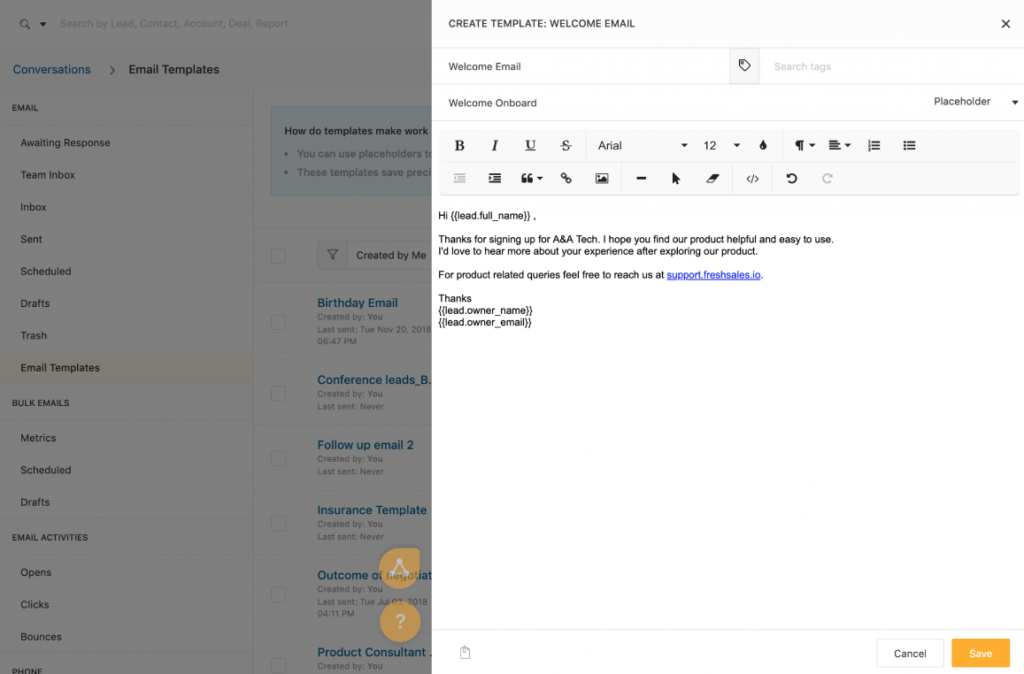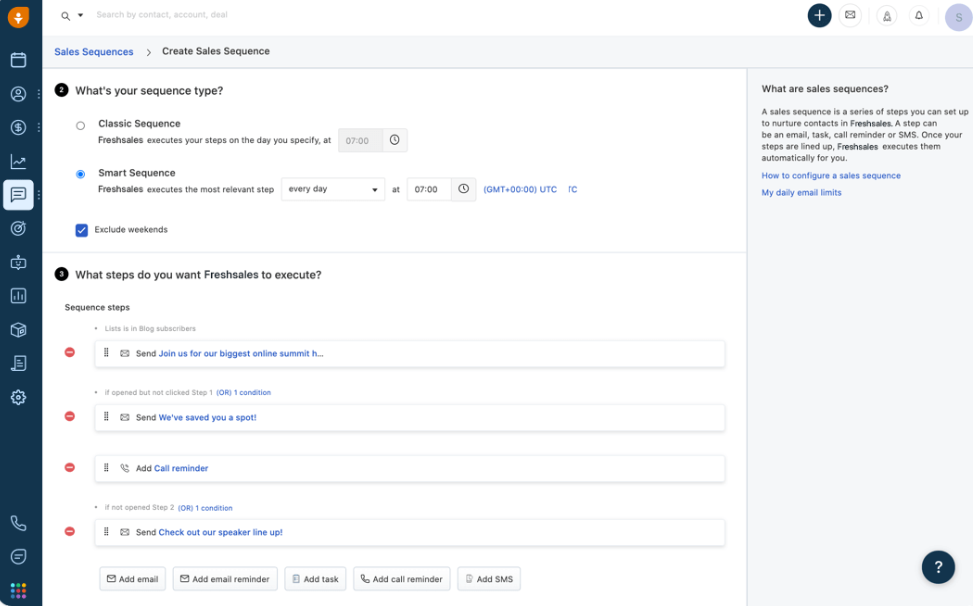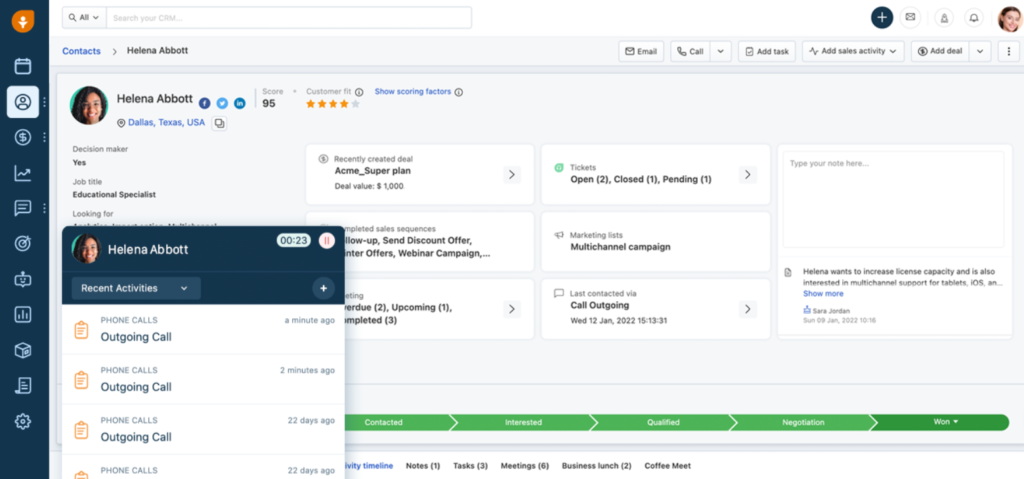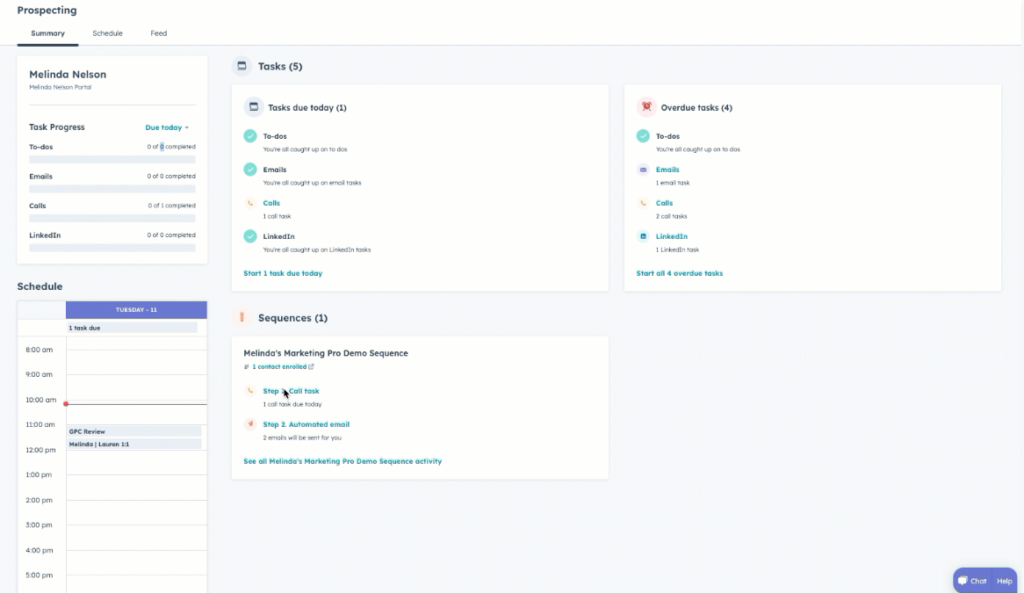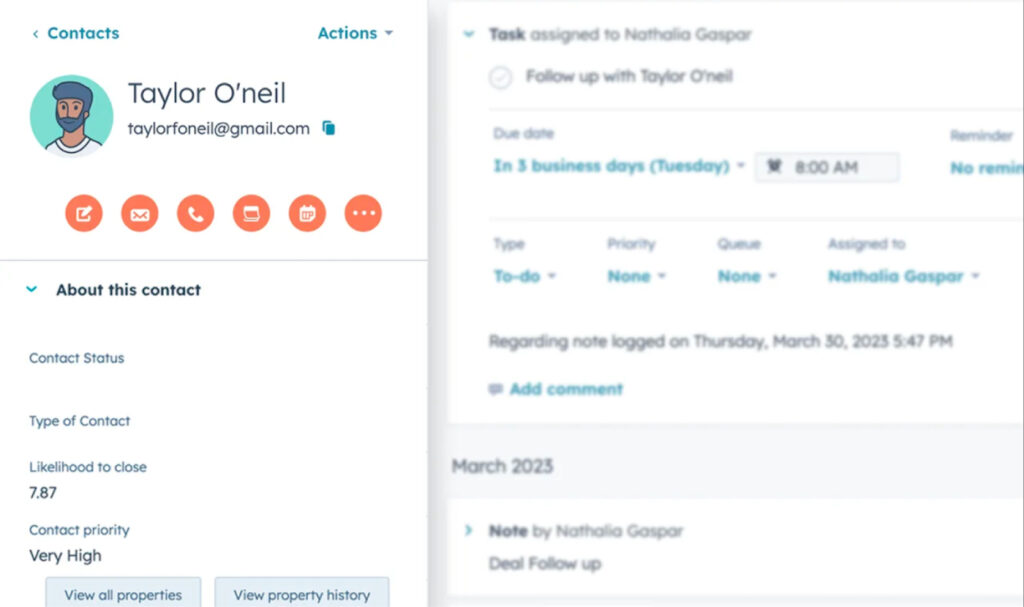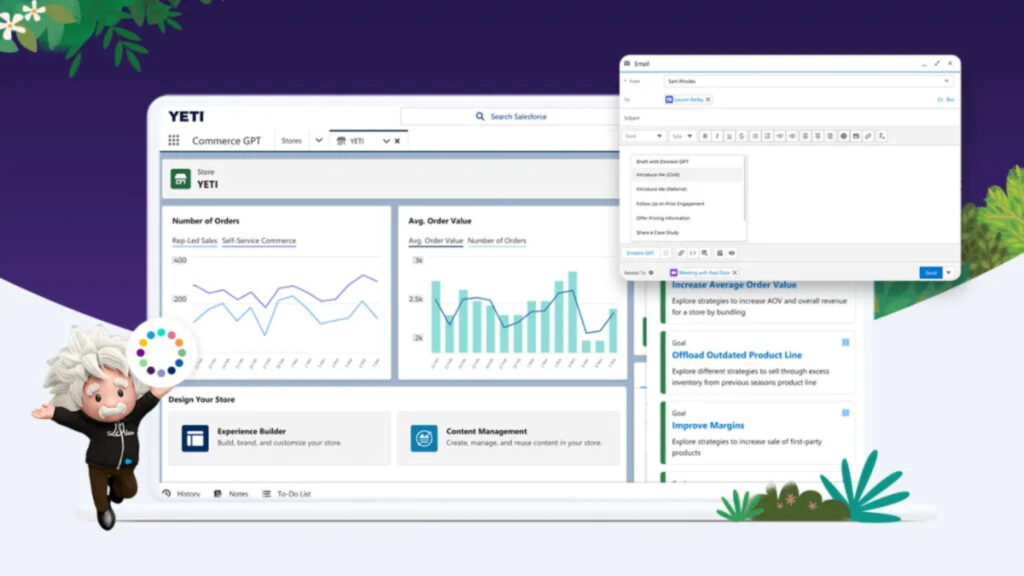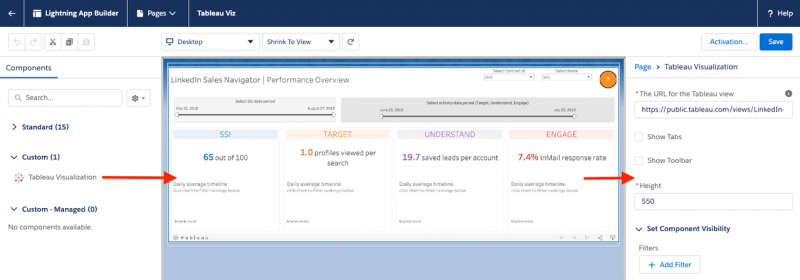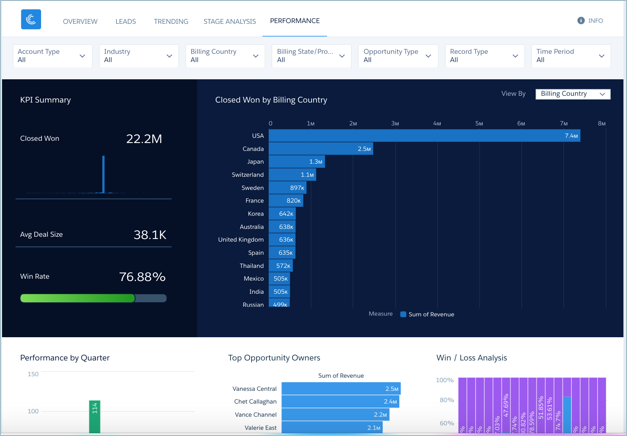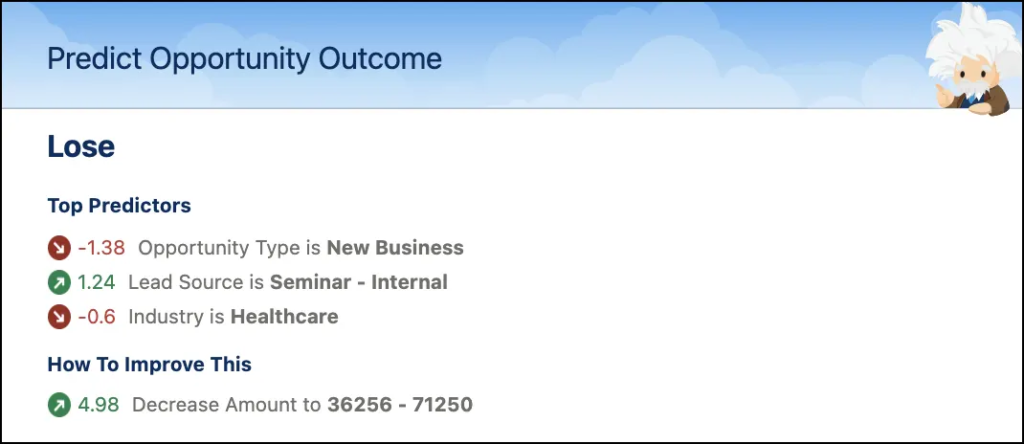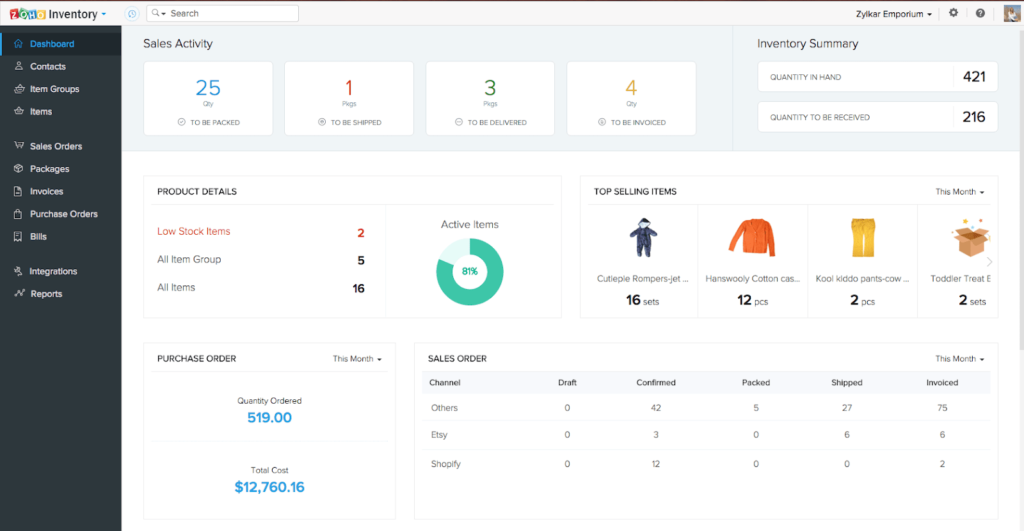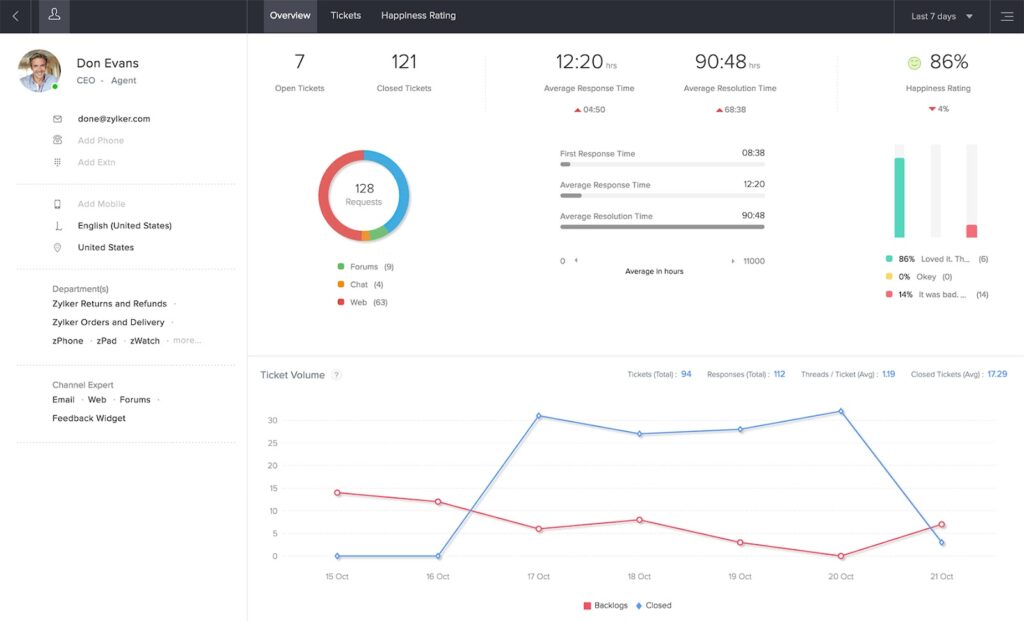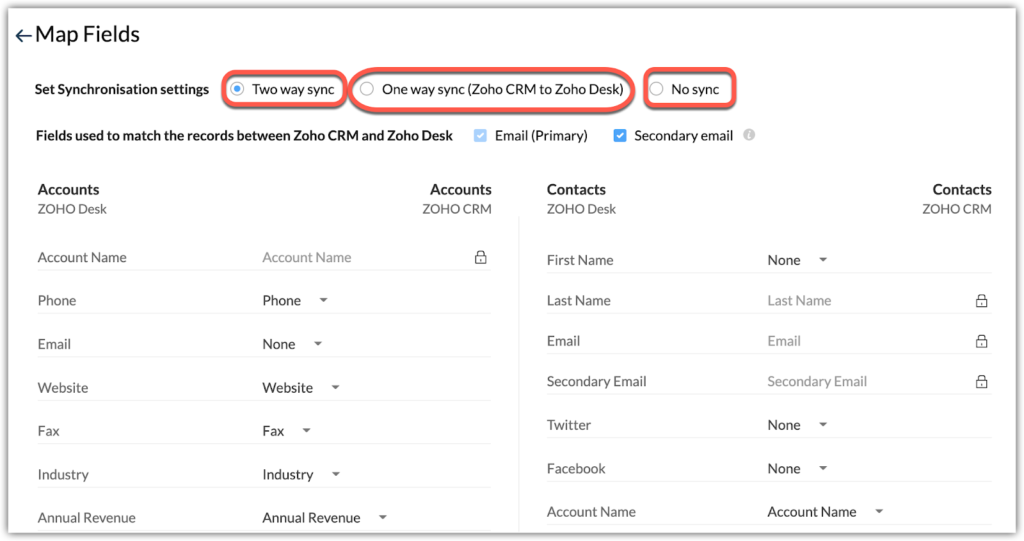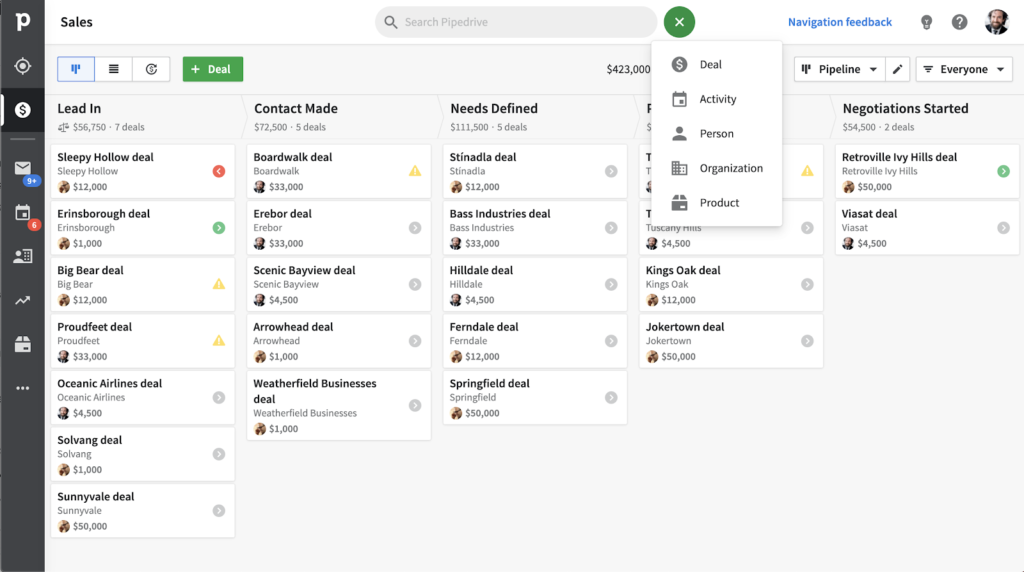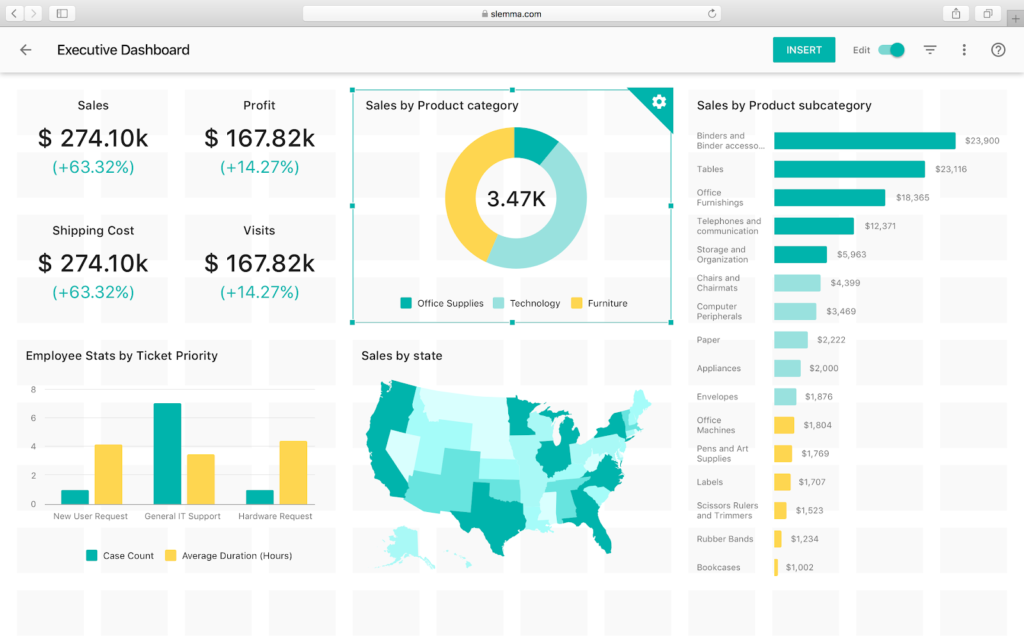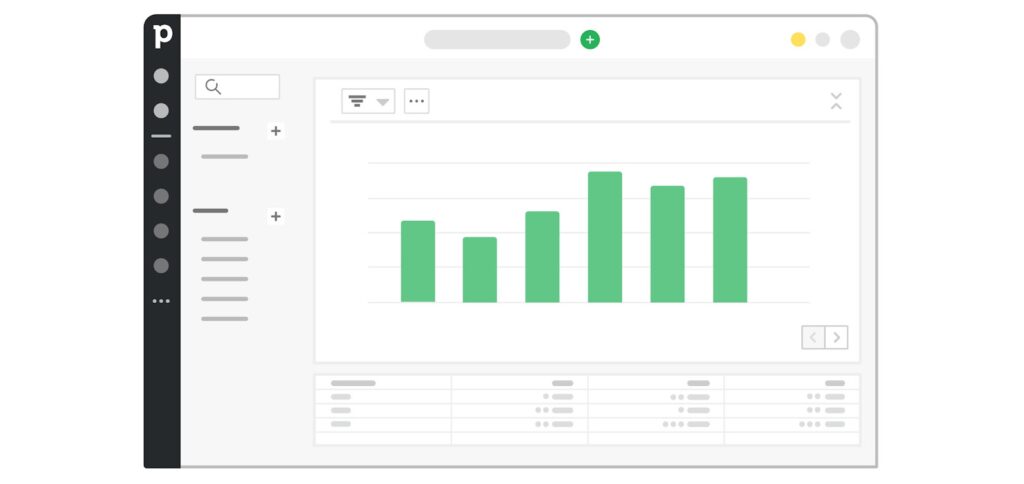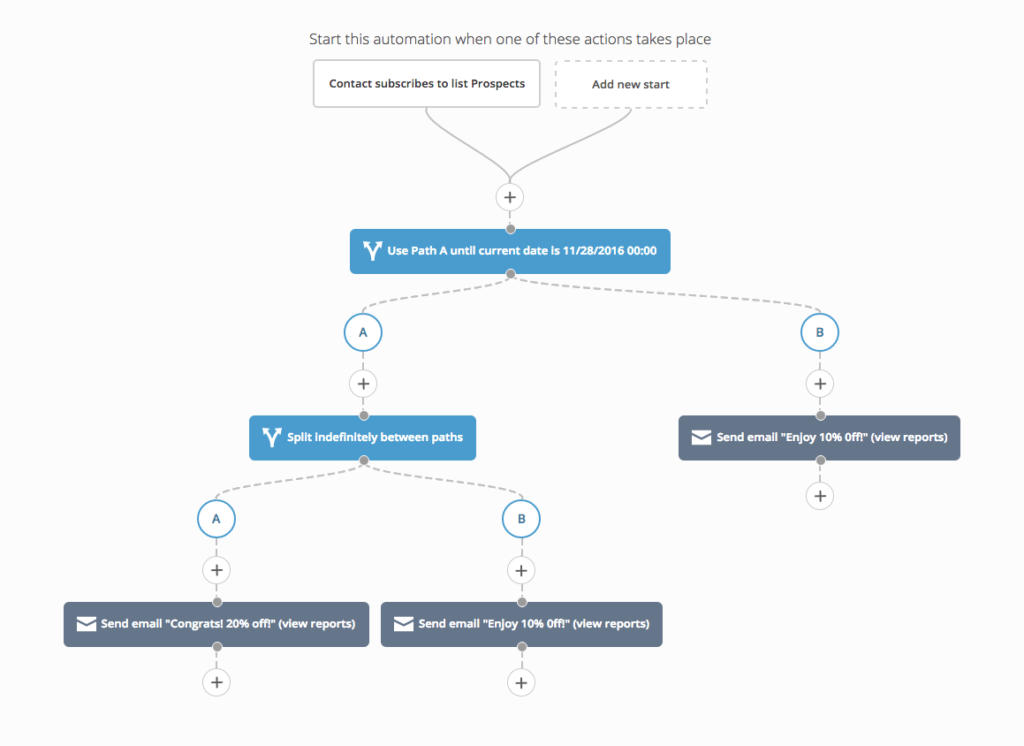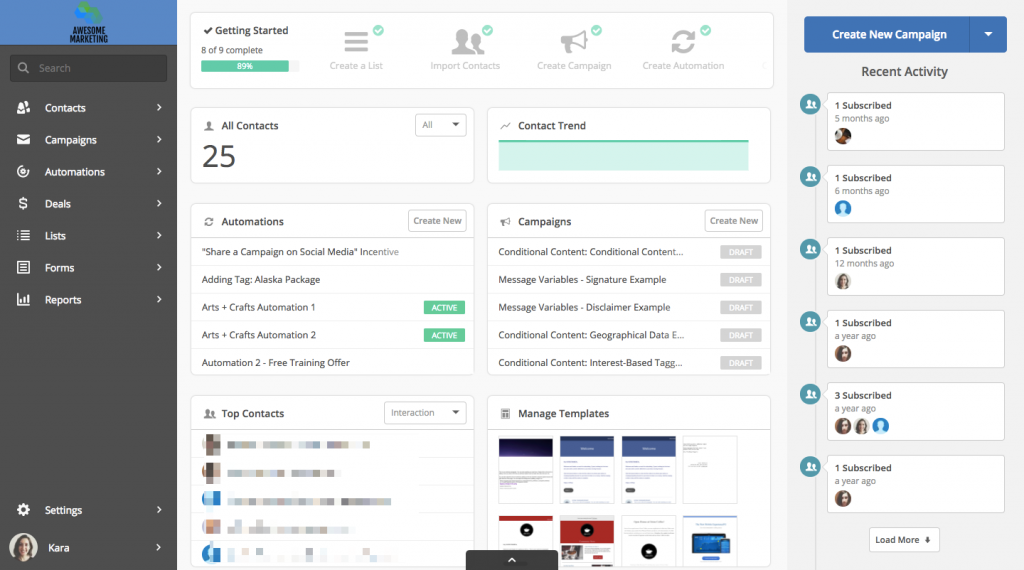Pipeline management software is a customer insight application that gives sales reps and managers the ability to build a funnel system that includes the necessary touchpoints for their industry. Then, they can track leads as they move through the buying journey. It’s often included as part of a sales-oriented customer relationship management (CRM) system.
Do you know where the bottlenecks in your sales pipeline are? What about where the most leads are dropping out? Sixty percent of buyers want to talk to salespeople during the consideration stage of their buying journey, once they’ve got a few options narrowed down and are looking for more information. If you don’t have the right touchpoints in place, you could be missing out on a huge chunk of business.
We have narrowed the myriad options on the market today to the top six solutions for managing sales pipelines in 2024:
- Freshsales: Best for integrations
- HubSpot Sales Hub: Best for SMBs
- Salesforce Sales Cloud: Best for enterprises
- Zoho CRM: Best for affordability
- Pipedrive: Best for simplicity
- ActiveCampaign: Best for customization
Read more: How to Build a Sales Pipeline
Software
Overall Score
(Out of 5)
Best Use Case
Starting Price

Freshsales
4.54
Integrations
$9

HubSpot Sales Hub
4.49
SMBs
$15

Salesforce Sales Cloud
4.42
Enterprises
$25
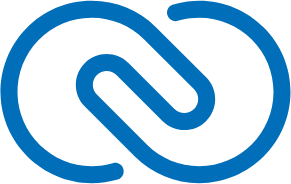
Zoho CRM
4.29
Affordability
$14

Pipedrive
4.04
Simplicity
$14.90

ActiveCampaign
3.88
Customization
$29

Freshsales: Best for integrations
Overall Score
4.54/5
User scores
4.4/5
Pricing
4.58/5
General features and interface
4.2/5
Core features
4.82/5
Advanced features
4.29/5
Integration and compatibility
5/5
UX
4.5/5
Pros
- Competitive pricing, especially for SMBs
- “Rotten Deals” feature automatically flags stale deals
- More than 1,000 integrations
- Freddy AI assistant
- Integrates directly with email and phone systems
Cons
- 500-email limit per user
- Does not offer 24/7 customer support
Why we chose Freshsales
Freshsales offers a full CRM suite at a competitive cost, gives access to more than 1,000 integrations, and most importantly, boasts a sophisticated and helpful AI assistant called Freddy AI.
This intelligent system goes well beyond basic automation, offering a suite of tools designed to enhance sales performance across the board.
One of Freddy AI’s standout features is its predictive lead scoring capability. By analyzing historical data and lead behavior, Freddy AI assigns scores to leads based on their likelihood to convert. Its strategic prioritization allows sales teams to focus their efforts where they’re most likely to yield results.
The automatic data enrichment feature is a noteworthy tool. By pulling information from publicly available sources, Freddy AI fills in the gaps in lead and contact profiles. This saves hours of manual data entry and ensures sales teams are always working with the most up-to-date and comprehensive information.
As timing is a crucial aspect of sales operations, Freddy AI’s ability to generate real-time deal insights keeping sales teams one step ahead is a game-changer. By continuously monitoring the sales pipeline, Freddy AI provides actionable recommendations on how to move deals forward. Whether it’s suggesting the optimal time for a follow-up or flagging deals at risk of stalling, these insights empower sales reps to make informed decisions quickly.
The beauty of this system lies in its seamless integration within the CRM. Sales professionals don’t need to juggle multiple tools or wade through complex reports. The insights are presented right where they’re needed, allowing for immediate action and maintaining the momentum of the sales process.
Freshsales also includes a feature called Freshbots Sessions, which extends the AI capabilities beyond traditional CRM functions. Freshbots Sessions is a package that includes conversational AI bots designed to interact with leads and customers, handling inquiries, qualifying leads, and even setting up appointments automatically. This feature is particularly beneficial for managing high volumes of inquiries, as it automates the initial stages of customer interaction, freeing up sales reps to focus on more complex tasks. The conversational bots are highly customizable and can be tailored to specific workflows, making them a versatile tool for businesses looking to scale their customer engagement without increasing headcount.
And with support for over 1,000 native and third-party integrations, including essential tools like G Suite, Microsoft Office 365, Mailchimp, Slack, and Zapier, Freshsales creates a unified ecosystem. This extensive connectivity goes a long way to creating a central business hub within the CRM.
While competitors like HubSpot and Salesforce offer their own AI solutions, Freshsales’ Freddy AI wins out because of its deep integration into the CRM’s core functionalities. Rather than simply being an add-on or afterthought to tick the “AI” checkbox, it’s an integral part of the Freshsales experience, providing targeted, actionable insights specifically tailored to sales pipeline management.
Crucially, Freshsales offers this advanced AI-driven automation without the complexity and high costs often associated with enterprise-level solutions. This makes it an ideal choice for businesses of all sizes looking to leverage the power of AI in their sales processes.

HubSpot Sales Hub: Best for SMBs
Overall Score
4.49/5
User scores
4.4/5
Pricing
3.96/5
General features and interface
4.43/5
Core features
4.46/5
Advanced features
4.64/5
Integration and compatibility
4.79/5
UX
4.75/5
Pros
- Free tier
- Easy to use
- Integrated marketing tools
- Automation without the need for coding
- Advanced email tracking
Cons
- Limited customization in free tier
- Limited advanced analytics
Why we chose HubSpot Sales Hub
By leveraging HubSpot’s accessible yet powerful features, growing businesses can optimize their sales operations without the complexity or high costs often associated with enterprise-level sales management.
One of the key advantages of HubSpot Sales Hub is its intuitive design. The interface is clean and straightforward, minimizing the learning curve for your team. This is particularly beneficial for SMBs that may not have the resources or time to dedicate to extensive training on a complex sales system. It also raises the likelihood of adoption among team members.
In fact, according to user reviews, HubSpot users consistently praise the platform’s ease of use, with one SMB owner noting, “HubSpot is incredibly user-friendly and has a very short learning curve. Our team was able to onboard and start using the CRM within a matter of days.”
But HubSpot’s appeal goes beyond simplicity; it also offers a large set of features at an affordable price point. The platform’s free tier is one of the most comprehensive in the CRM space, providing essential CRM functionalities. This perennially makes it an attractive option for startups and small businesses that aren’t ready to invest in a paid solution. And as you scale, HubSpot’s tiered pricing structure allows you to unlock additional capabilities without the sticker shock associated with enterprise-level platforms.
The platform’s cohesive approach to marketing and sales is crucial for maintaining a smooth and efficient sales pipeline. With HubSpot, marketing efforts such as email campaigns, social media outreach, and content management are directly linked to sales activities, providing a holistic view of customer interactions. This makes it easier to track leads throughout their journey.
HubSpot’s sales-focused features further enhance the platform’s utility. The email tracking function allows sales teams to see when a prospect opens an email, clicks on a link, or downloads an attachment, providing valuable insights into their engagement level. Call recording helps maintain accurate records of customer conversations, which is essential for follow-ups and ensuring consistency in communication. And the customizable email templates save time while ensuring that communications are both professional and personalized, improving the effectiveness of outreach efforts.
When it comes to sales pipeline management specifically, HubSpot Sales Hub offers a full set of capabilities that are particularly well-suited for SMBs. The visual pipeline, with its drag-and-drop interface, makes it easy for sales teams to track deals at every stage of the sales process. This visual representation allows them to quickly identify bottlenecks and prioritize actions to move deals forward.
HubSpot’s automation capabilities also play a critical role in pipeline management. Automated workflows can handle routine tasks such as sending follow-up emails, scheduling meetings, and updating deal statuses based on predefined triggers. This reduces the manual workload on sales teams and ensures no leads fall through the cracks. The ability to integrate these workflows with marketing activities further enhances lead nurturing and maintains a consistent, personalized experience for prospects throughout the sales cycle.
Of course, HubSpot isn’t without its limitations. As noted in various reviews, the platform’s customization options are less extensive than Salesforce, which may pose a challenge for businesses with highly specialized requirements. Additionally, while HubSpot’s automation capabilities are impressive, some users have reported room for improvement in terms of third-party integrations.

Salesforce Sales Cloud: Best for enterprises
Overall Score
4.42/5
User scores
4.4/5
Pricing
3.13/5
General features and interface
4.55/5
Core features
5/5
Advanced features
4.64/5
Integration and compatibility
5/5
Security and compliance
4.25/5
UX
4.4/5
Pros
- Lead scoring, predictive forecasting, automated activity tracking with Einstein AI
- Create custom objects, fields, and workflows
- AppExchange supports over 7,000 apps
- Mobile app supports managing tasks, meetings, and customer interactions
Cons
- Advanced features only available at higher tiers for a significant cost
- Salesforce imposes limits on data storage
Why we chose Salesforce
For enterprises that require a highly customizable, feature-rich, and deeply integrated sales pipeline management solution, Salesforce Sales Cloud is hard to beat. The level of sophistication and flexibility it provides is unmatched in the market, making it a worthy investment for large-scale businesses.
Unlike HubSpot, which offers a more standardized approach, Salesforce Sales Cloud gives you the ability to tailor the platform to your unique business needs and workflows. This level of flexibility is crucial for enterprises with complex operations that require a specialized solution.
One of the primary ways Salesforce enables extensive customization is through the creation of custom objects and fields. This allows you to capture and manage data that is specific to your business processes. For example, you can design custom sales stages that perfectly reflect your unique sales cycle, ensuring that each step in the pipeline aligns with your operational requirements.
Salesforce’s advanced workflow automation tools, such as the Flow Builder, take customization even further. You can use these tools to automate everyday tasks, like lead routing, approval workflows, and follow-up reminders. Along with saving valuable time, this helps minimize the risk of human error across sales operations.
Salesforce’s Lightning Experience also enables a high degree of customization at the user interface level. You can tailor dashboards and reports to display the most relevant data for different roles within your organization. Each team member can have the information they need laid out simply and at a glance. The drag-and-drop dashboard builder makes it easy to create and modify these views.
The AppExchange provides access to over 7,000 integrations—far more than what competitors like Freshsales offer. This means you can connect Salesforce Sales Cloud with all the other tools and systems your enterprise relies on, from accounting software to customer service platforms.
Boasting one of the better AI tools on the list, the powerful Einstein AI is invaluable for lead scoring and predictive forecasting. These enterprise-grade features provide your sales teams with deep insights and data-driven decision-making tools. However, the full might of Einstein AI is only available at higher price tiers. Options like ActiveCampaign also offer top-notch marketing automation, but they lack the same depth of sales-specific AI and reporting tools that Salesforce brings to the table.
And, speaking of pricing tiers, Salesforce’s is on the more expensive side, especially compared to more budget-friendly options like Zoho CRM. The platform also has a steeper learning curve, and some users have reported performance issues, particularly during the transition to the Lightning interface. With a more powerful system comes more things to break.

Zoho CRM: Best for affordability
Overall Score
4.29/5
User scores
4.3/5
Pricing
3.75/5
General features and interface
4.2/5
Core features
5/5
Advanced features
3.75/5
Integration and compatibility
5/5
UX
4/5
Pros
- Highly competitive pricing for feature set
- Create and customize multiple sales pipelines
- Zia AI for predictive analytics
- GDPR and HIPAA compliance
Cons
- Longer response time for customer support compared to competitors
- Heavy dependency on Zoho ecosystem
Why we chose Zoho CRM
Zoho CRM, a long-standing player in the CRM game, offers an incredible range of features at a price that’s hard to beat. Starting at $14 per user per month, Zoho CRM delivers the kind of advanced tools you’d typically expect from much more expensive platforms like Salesforce and HubSpot. For small to mid-sized businesses, this means you can access powerful sales pipeline management features—like customizable pipelines, sales forecasting, and territory management—without stretching your budget.
Its AI-powered assistant, Zia, provides predictive analytics and smart recommendations that help you prioritize your leads and optimize your sales strategies, all without the price tag you’d find with other CRM providers. This level of AI integration at such an affordable rate is a game-changer, especially if you’re looking to harness advanced technology to boost your sales efforts.
That said, it’s worth noting that Zoho CRM isn’t as user-friendly as some of its competitors, like HubSpot. The extensive customization options and setup process can be a bit complex, especially if you’re new to CRM software. Additionally, while the Zoho ecosystem offers a lot of functionality, you may find that to get the most out of Zoho CRM, you’ll need to integrate with other Zoho products, which can add a layer of complexity.

Pipedrive: Best for simplicity
Overall Score
4.04/5
User scores
4.43/5
Pricing
2.71/5
General features and interface
4.32/5
Core features
4.11/5
Advanced features
3.39/5
Integration and compatibility
4.79/5
UX
4.5/5
Pros
- Highly visual pipeline management
- Trigger-based workflows
- LeadBooster add-on available
- User-friendly interface
- Competitive pricing
Cons
- Limited advanced features, especially in lower tiers
- Full leverage requires add-ons, increasing overall cost
Why we chose Pipedrive
Pipedrive is well-suited for small to mid-sized businesses that need a straightforward solution. It’s designed to be user-friendly, with an interface that simplifies the process of managing and tracking deals.
Compared to similar CRMs like Zoho, the differences in approach quickly become clear. Zoho CRM is packed with features and offers extensive customization options, but this comes with increased complexity. For businesses that require a broad range of tools and have the resources to manage a more intricate setup, Zoho CRM might be a suitable choice. However, this complexity can be overwhelming for teams looking for a more streamlined solution.
Pipedrive, by contrast, focuses on providing a simpler, more accessible platform that allows businesses to concentrate on sales pipeline management without getting bogged down by unnecessary features.
But Pipedrive can be a comprehensive system, too. The LeadBooster tool, which enhances the CRM’s lead generation capabilities, is an add-on priced at $32.50 per company per month. LeadBooster includes live chat, chatbots, and a Prospector tool that helps you identify and qualify leads based on specific criteria. This add-on enhances Pipedrive’s functionality by ensuring a continuous flow of qualified leads, a feature that in other CRMs, is often only available at higher subscription levels.
While Zoho CRM does offer integrated lead management tools, accessing these requires committing to higher-tier plans, which can increase costs significantly.
Pipedrive’s approach, with its modular add-ons like LeadBooster, offers more flexibility and allows businesses to scale their CRM capabilities as needed without committing to a higher upfront cost. In contrast, while Zoho CRM provides a wide array of features out of the box, it becomes more complex and expensive as businesses look to unlock advanced functionalities.
Also read: Pipedrive vs. HubSpot CRM

ActiveCampagin: Best for customization
Overall Score
3.88/5
User scores
4.53/5
Pricing
2.5/5
General features and interface
4.2/5
Core features
4.29/5
Advanced features
3.57/5
Integration and compatibility
4.58/5
UX
3.5/5
Pros
- Advanced email marketing integration
- 1,000 pre-built automation “recipes”
- Lead scoring with deep integration
- Flexible app studio for custom integrations
Cons
- No native document storage
- AI and landing pages only available at higher tiers
Why we chose ActiveCampaign
Customization is crucial for creating optimized automation workflows and lead management processes. ActiveCampaign leads in the space for its ability to create complex, multi-step automation workflows through its intuitive visual automation builder.
This tool allows users to design workflows that are intricately customized to fit specific business needs, far surpassing what many other CRM platforms offer. For example, businesses can create detailed sequences that trigger specific actions based on customer behavior, such as sending follow-up emails, updating CRM statuses, or assigning tasks to team members based on real-time interactions.
The platform’s use of conditional logic allows workflows to branch off based on various criteria, making it possible to automatically adjust sales strategies according to how leads engage with the content. This level of control ensures that businesses can maintain a dynamic and responsive sales process, which is crucial for optimizing lead conversion rates.
ActiveCampaign also supports multichannel integration within these workflows, enabling consistent communication across email, SMS, and social media, so leads are nurtured effectively from any stage in the sales funnel.
When compared to competitors like HubSpot and Salesforce, ActiveCampaign wins in the categories of advanced automation and cost-effectiveness. While HubSpot offers solid automation features, they come at a higher cost, particularly for advanced functionalities that ActiveCampaign provides at lower pricing tiers. Having said this, advanced AI-assisted processes and custom landing page templates are only available at higher price tiers.
Read more: Sales Pipeline Analysis: Overview, Metrics & Best Practices
Find your new pipeline management software
What are common features of sales pipeline management tools?
When choosing the best sales pipeline management software, look for tools that offer at least the following key features:
Funnel creation
Pipeline management software helps each business to create a funnel that accurately represents their sales process. This usually comes in the form of a drag-and-drop editor, making it easy to alter the funnel as the organization’s needs change. Each stage in the funnel includes different triggers and automated touchpoints, like contract sending and reminder emails. If their chosen pipeline management system doesn’t offer automated touchpoints, companies should consider integrating it with workflow management software.
Also read: Top Business Management Software Solutions
Lead scoring
Using the lead’s current stage and other factors like engagement, pipeline management software can calculate the likelihood of a deal closing if a sales rep called them right at that moment and score it accordingly. It then assigns it a score, identifying the most high-value leads.
For example, let’s say a company has a lead, Sally, that they’re trying to determine whether she’s ready to buy. Sally opens an email newsletter from the company, and she gets one point. She clicks on another item while browsing the site, and she gets another point. She comes back to the site 3 days later to download a white paper, and she gets 2 points. Sally then browses the pricing page, and that triggers a notification to offer her a demo (or automatically does that via the chatbot). Sally is engaging with the company’s content often, meaning she’s showing intent.
In this case, the pipeline management tool would likely give her a high score. Sales teams can use this to determine which leads should get the most attention and maximize their time. An integration to sales intelligence software would also be helpful to improve lead scoring with the use of artificial intelligence.
Also read: Best Sales Intelligence Software 2024
Opportunity filters
Pipeline software should include opportunity filters. These tools let a sales rep search the database for leads in Cincinnati that have a lead score of 15. The filters can be set to any existing search or tag criteria. Working with the marketing team, sales reps use these filters to create targeted campaigns for companies in Cincinnati that are nearing the purchasing stage. This way, they’re sending information that’s actually relevant to their target audience, improving engagement for that demographic.
Email sync
With two-way email sync, sales reps can send and receive emails directly in their pipeline management system to keep detailed records of conversations with prospects. Alternatively, many pipeline management solutions provide an email address that the sales rep can BCC on communications with leads to send the emails to the system while keeping the sales rep’s inbox separate.
Reminders and updates
Pipeline management tools should include reminders and updates to help sales reps track their meetings, stagnant leads, and overdue tasks. Reminders ensure the sales team is checking in with their leads regularly, while updates let them know when opportunities have moved to the next step in the sales process.
Read more
Benefits of sales pipeline management software
Sales pipeline management software optimizes the sales process and offers the following benefits.
Simplified, visible workflows
Pipeline management software makes it easy for sales reps to view their leads in each stage of the buying journey. They can see how quickly their leads move through the funnel, where any are dropped out, and how well their leads convert. This visibility gives the team valuable insights that they can use to adjust their sales process as needed.
Detailed communication records
Between email sync, call logs, and even call recording, pipeline management systems provide detailed communication records for all of an organization’s leads. Sales managers can easily review the conversations reps are having with their prospects, providing them with coaching opportunities and helping them determine why deals might not be closing.
More accurate sales forecasting
Because sales teams have more visibility into their funnel with pipeline management software, it’s easier for them to forecast. They can take a look at the number of leads in their pipeline and their respective lead scores to determine how many are likely to close. Pipeline management software also keeps track of historical sales data, further improving the forecasting process. For the highest level of accuracy, organizations will want pipeline management software that integrates with their other sales tools.
Improved close rate
Because sales reps know which deals to prioritize, they can spend time on the leads that are ready to close while gently nurturing the ones in earlier sales pipeline stages. This keeps them from accidentally ignoring prospects who are actively looking to make a purchase and can improve their close rate.
Also read: Best Sales Software of 2024
Common use cases for pipeline management tools
Pipeline management tools are crucial for sales teams that want to improve their sales process. Let’s look at a few of the ways they can use the software.
Account-based marketing (ABM)
Companies that try to market to everyone ultimately spread their messaging too thin and don’t really end up marketing to anyone. Account-based marketing (ABM) encourages the sales and marketing teams to work together and create a list of ideal clients. Then, they refine that list to find similar accounts and create marketing campaigns that appeal to those demographics. Sales pipeline management software improves ABM campaigns because sales reps can filter their existing leads and find companies that have similarities and are in the same funnel stage. Using this data, the marketing team can then tailor campaigns to convert these leads.
Lead generation
Using the lead scoring features of sales pipeline management alongside their historical data, organizations can determine the types of companies that are most likely to convert and create lookalike profiles for lead generation. Organizations need this data to identify new opportunities that have a high likelihood of closing and give sales reps a more concrete idea of the companies they should be targeting. Once a company has identified these lookalike prospects, sales pipeline management allows them to easily add them to their sales funnel and assign them to a sales rep.
Revenue forecasting
Sales pipeline management software determines which deals are most likely to close based on historical data and other factors to create a sales forecast. The organization can then integrate its pipeline management software with its accounting software to combine this sales forecast with an overall revenue forecast for a more accurate prediction. After forecasting, pipeline management software also includes a sales dashboard that shows the company how they’re performing against the forecast. The sales team can then adjust their approach and account for areas that are underperforming.
Read more: How to Create An Effective Sales Process Map
Finding the best pipeline management software for your business
Each business has a unique sales pipeline, so you need a pipeline management system that lets you customize your funnel. You also need to be able to see which sales rep owns which leads at a glance, prompting you to reach out if a lead has been stagnant. To find the best pipeline management software for your business, create a short list of three to four tools you’re considering and then check out their free trials, if available. This will give you an idea of their pipeline builder capabilities and let you see how the platform will work for your business.



